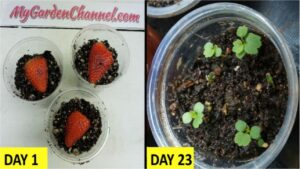The Pink Elephant Bush (Portulacaria afra ‘Variegata’) is a beautiful succulent known for its attractive, fleshy leaves with pink and green variegation. It’s a relatively low-maintenance plant that can grow both as a bush or ground cover, making it a versatile addition to any garden. Here’s how to care for it:
1. Light
- Full Sun: The Pink Elephant Bush thrives in bright, direct sunlight. Ideally, place it in a location that gets 6 hours or more of sunlight per day.
- Partial Shade: It can tolerate some partial shade, but for optimal growth and color, it does best with full sun exposure.
2. Temperature
- Warm Temperatures: This succulent prefers warm conditions and does best in temperatures between 65°F (18°C) and 85°F (29°C).
- Frost Sensitivity: It is not frost-tolerant, so avoid exposing it to temperatures below 32°F (0°C). If grown in colder regions, it’s best to keep it indoors during winter.
3. Soil
- Well-Draining Soil: Like most succulents, the Pink Elephant Bush requires well-draining soil to prevent waterlogged roots. A cactus or succulent potting mix works well.
- Slightly Acidic to Neutral: Aim for soil with a pH range between 6.0 and 7.0.
4. Watering
- Water Sparingly: As a succulent, it stores water in its leaves and roots, so it doesn’t need frequent watering. Allow the soil to dry out completely between waterings.
- Winter Care: During the winter months, reduce watering further, as the plant enters a dormant period.
- Watering Tips: When watering, be sure to water deeply, but avoid letting the plant sit in water, as this can lead to root rot.
5. Fertilizing
- During Growing Season: Feed the Pink Elephant Bush with a diluted, balanced liquid fertilizer during the growing season (spring and summer) about once a month.
- Avoid Over-fertilizing: Succulents don’t need heavy feeding, so it’s best to fertilize sparingly.
6. Pruning
- Encourage Bushier Growth: To encourage bushier growth and maintain a compact shape, prune the plant occasionally. Trim back long or leggy stems to stimulate new growth.
- Remove Dead or Damaged Parts: Regularly remove any dead, damaged, or unhealthy parts of the plant.
7. Repotting
- When Necessary: The Pink Elephant Bush doesn’t need frequent repotting, but if it becomes root-bound or too large for its pot, repot it in the spring or early summer.
- Pot Size: Choose a pot that is just slightly larger than the current one to prevent water from pooling in a pot that’s too large.
8. Pests and Diseases
- Common Pests: This plant is generally pest-resistant, but it may occasionally attract mealybugs, aphids, or spider mites. If you notice pests, treat the plant with insecticidal soap.
- Root Rot: The biggest risk to the Pink Elephant Bush is overwatering, which can lead to root rot. Always ensure good drainage, and avoid leaving the plant in standing water.
9. Propagation
- From Cuttings: Pink Elephant Bush is easy to propagate from stem cuttings. Simply cut a healthy stem and allow it to dry out and callus for a few days. Then, plant the cutting in well-draining soil and water sparingly until it roots.
- Leaf Cuttings: You can also propagate using individual leaves, though stem cuttings are generally more successful.
10. Growth Habit
- Shrubby or Ground Cover: The Pink Elephant Bush can grow as a compact shrub or spread out as ground cover. It can reach a height of about 12-18 inches (30-45 cm) and spread up to 3 feet (90 cm) wide.
- Slow Growth: This plant has a relatively slow growth rate, so it won’t outgrow its space quickly.
11. Toxicity
- Non-Toxic: Unlike some other succulents, the Pink Elephant Bush is non-toxic to pets and humans, making it a safe plant for homes with animals or small children.
By following these care guidelines, your Pink Elephant Bush should thrive and provide lovely, variegated foliage to brighten up your space!

